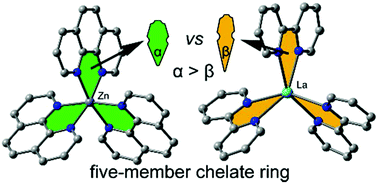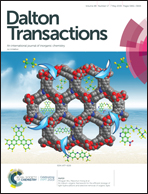On the preferences of five-membered chelate rings in coordination chemistry: insights from the Cambridge Structural Database and theoretical calculations†
Abstract
The purpose of this review is to give an overview of three important N-bidentate ligands: 1,10-phenanthroline (phen), 2,2′-bipyridine (bpy), and ethylenediamine (en). We have not attempted to be comprehensive because of the huge amount of activity being done in coordination chemistry using these ligands. Instead we present a full structural and geometrical study by using the Cambridge Structural Database (CSD) combined with theoretical calculations that allow us to parameterize their coordinating properties and ability to coordinate to transition and non-transition metals. More importantly, we illustrate that upon coordination and formation of the five-membered chelate ring, these ligands are able to adapt themselves to the requirements of the different metals by changing the MN distances and NMN angles. Therefore, a redefinition of the preferences of these ligands to metals with large ionic radii is needed. Finally, we will present some facts about the participation of these ligands in inorganic–organic hybrids (IOHs) based on Keggin polyoxometalates (POMs).

- This article is part of the themed collection: 2019 Frontier and Perspective articles


 Please wait while we load your content...
Please wait while we load your content...